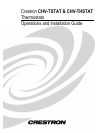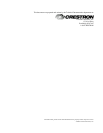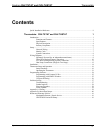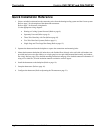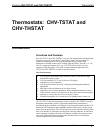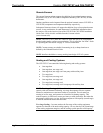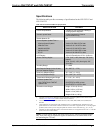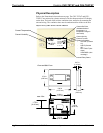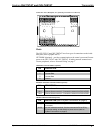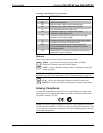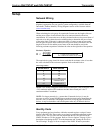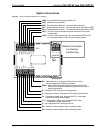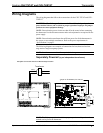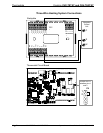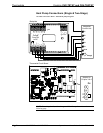
Thermostats Crestron CHV-TSTAT and CHV-THSTAT
Remote Sensors
The current firmware release supports the addition of two optional remote sensors:
temperature only (CHV-RTS) and/or temperature/humidity (CHV-RTHS), for both
thermostats.
Outdoor conditions can be imported from the optional external sensors CHV-RTS or
CHV-RTHS, temperature and temperature/humidity respectively.
Subsequent firmware releases will support the addition of up to four optional remote
sensors, in any combination, for each thermostat. For additional information about
the sensors, refer to the latest revision of the CHV-RTS & CHV-RTHS Installation
Guide (Doc. 8189), which is available from the Crestron website
(www.crestron.com).
NOTE: The CHV-TSTAT and CHV-THSTAT allow the user to set a temperature
that the heating and/or cooling system maintains. This is called the “Set Point”. Refer
to “Operating the Thermostat” on page 21 for more information.
NOTE: Crestron sensors are suitable for mounting in dry or damp locations as
defined by the National Electrical Code.
NOTE: Installers should have a strong working knowledge of HVAC systems.
Heating and Cooling Systems
The CHV-TSTAT can control the following heating and cooling systems:
• One stage heat
• One stage heat, one stage cool
• One stage heat, one stage cool: heat pump with auxiliary heat
• Two stage heat
• Two stage heat, one stage cool
• One stage heat, two stage cool
• Two stage heat, two stage cool
• Two stage heat, two stage cool: heat pump with auxiliary heat
NOTE: Two Stage Heating – Unlike traditional furnaces that turn on and run at full
capacity with each demand for heating, two-stage heat operates like two separate
furnaces to maintain more consistent comfort in your home. The unit starts out
running in its first stage, and operates at a fraction of its heating capacity. This
reduced capacity is sufficient to warm your home on mild winter days. But when the
temperature outside goes very low, the furnace adjusts to full capacity (second stage)
to meet the demand for heat within the home.
Two Stage Cooling – In warm weather, the first stage of the cooling equipment
operates at a fraction of the total cooling capacity. On very hot days, the second stage
of the cooling equipment energizes, and the cooling system operates at full capacity.
2 • Thermostats: CHV-TSTAT and CHV-THSTAT Operations and Installation Guide – DOC. 8163A



